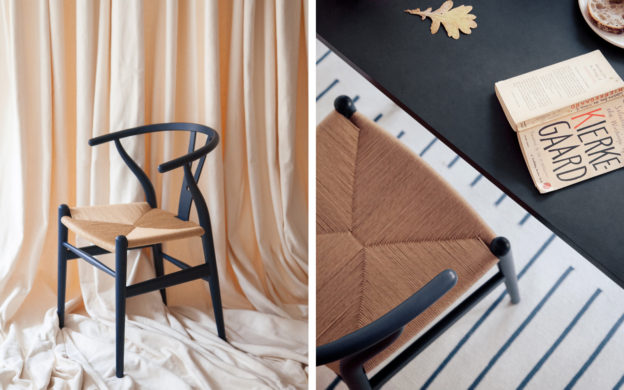| In partnership with |  |
The Wishbone Chair, designed by Danish designer Hans Wegner in 1949 for Carl Hansen & Søn, is one of the most recognizable chair silhouettes to come out of the Danish Modern design movement, and continues to be one of the most sought-after chairs in the world, resulting in a litany of imitations and knock-offs. But the real one, still produced by in Denmark by production house Carl Hansen & Søn, is a classic for a reason.
Also called the CH24 or Y-Chair, the Wishbone was commissioned by Carl Hansen & Søn in 1948, when the house asked Wegner to make nine new pieces of furniture. The resulting four chairs, four tables, and one sideboard are among some of Wegner’s most enduring works.
Yet still, the one that stands head and shoulders above the rest is the Wishbone Chair. It is now available in the color “Soft Blue,” giving a fun update to the timeless design. While colors certainly do come in waves of popularity, deep blue is a mainstay and, if you love blue, you’ll love this hue. Because the seat is still its natural color, the contrast of matte, saturated paint and muted, natural tone creates a grounding element to the chair that saves it from being trendy.
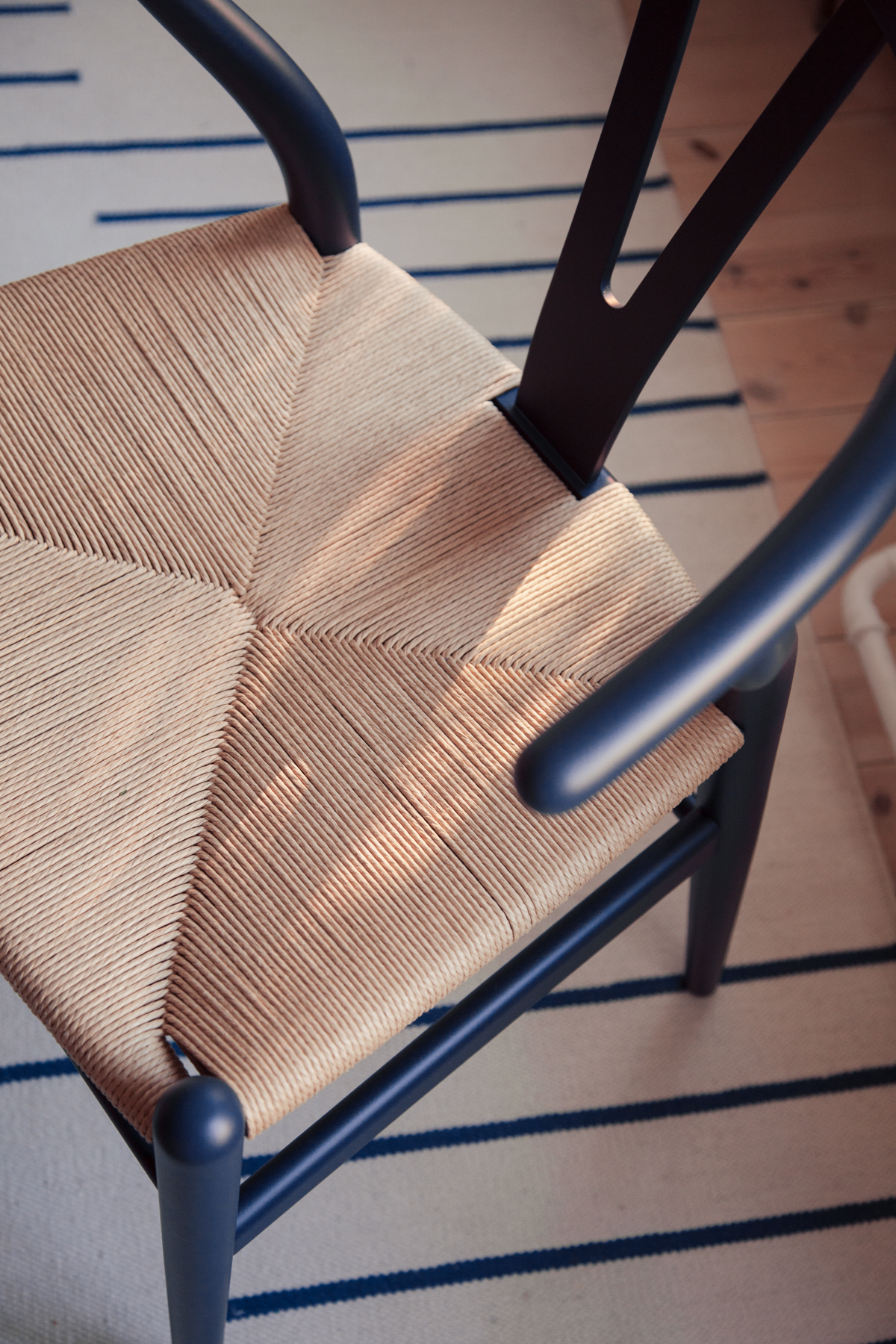 |
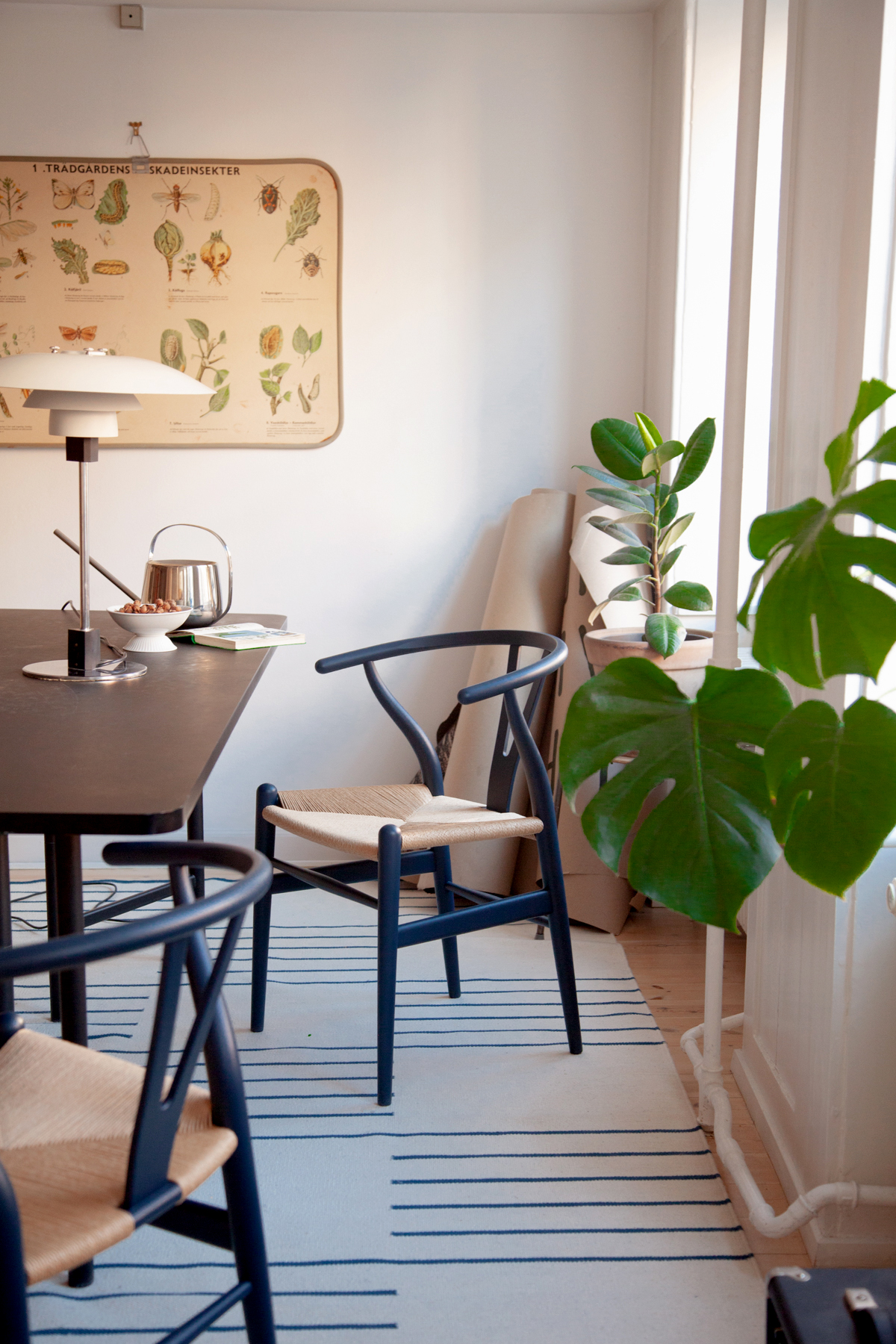 |
Made from solid beech wood and paper cord, the chair is as durable as it is functional.
The cord was originally chosen by Wegner as a stand-in material, as resources were tight during WWII. He ended up continuing to use the material because it was so strong and he liked the organic look of the cord. The cord lasts for approximately 50 years, at which time it can easily be rewoven.
The production of the Wishbone requires the work of a number of highly-skilled artisans. It has 14 parts and takes 100 production steps to put together, most of which are done by hand. The cord seat itself takes one hour for an experienced weaver to create At the time of its release, it was considered very innovative, especially in how the top rails and arms were crafted as a single piece.
 |
 |
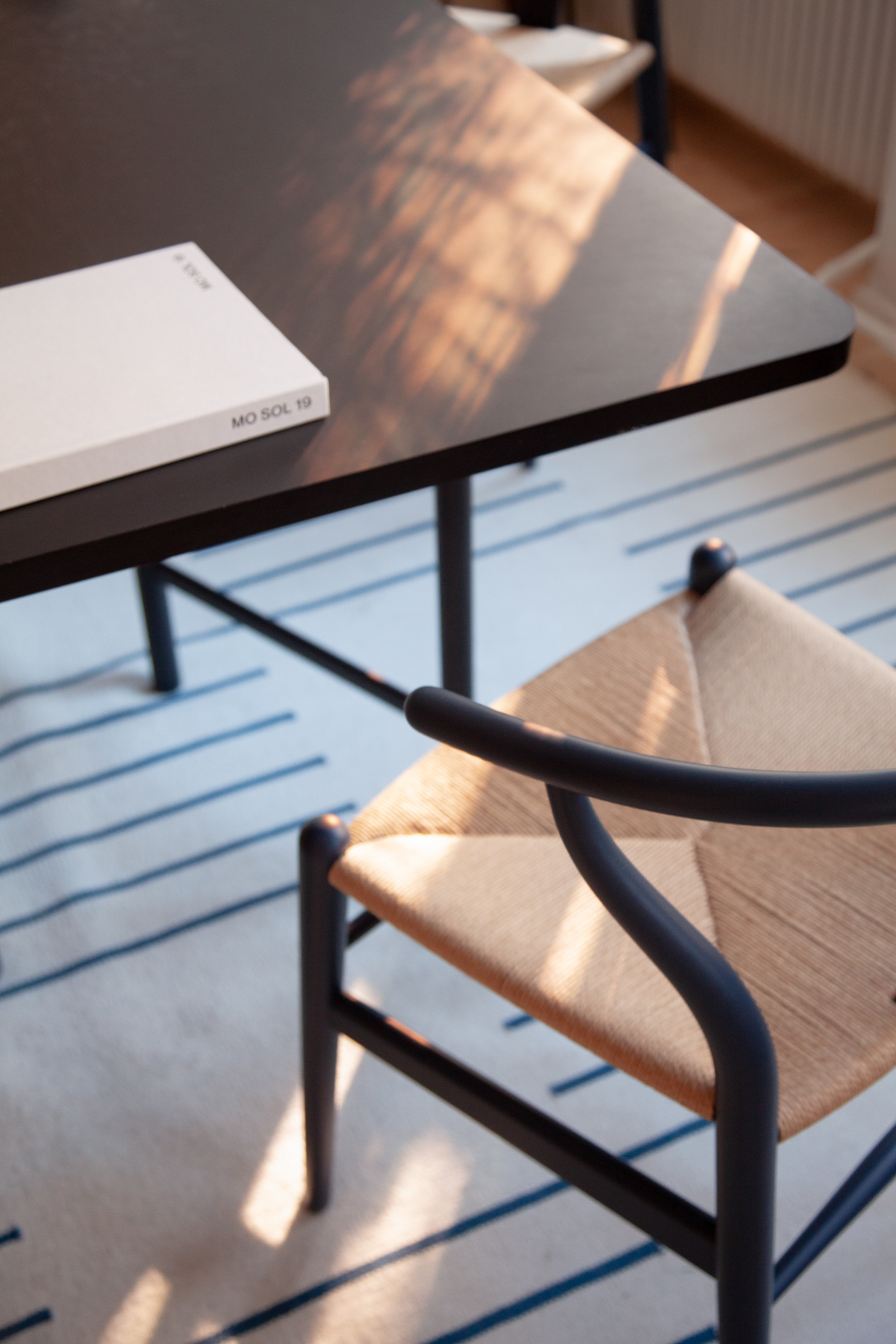 |
 |
Though it wasn’t the first piece of furniture to use steam-bending (that honor goes to Chair No.14 by Michael Thonet in 1859), its use of the method is notable for the way it is streamlined in production, as with much of the Danish Modern movement.
In the 1990s, the chair’s height was increased by two centimetres in order to accommodate the fact that people, on average, had become taller since the chair was first released.
It’s little details like this that really showcase how design is a living medium, and the best production houses, such as Carl Hansen & Søn, are constantly aware of how their items are being used.
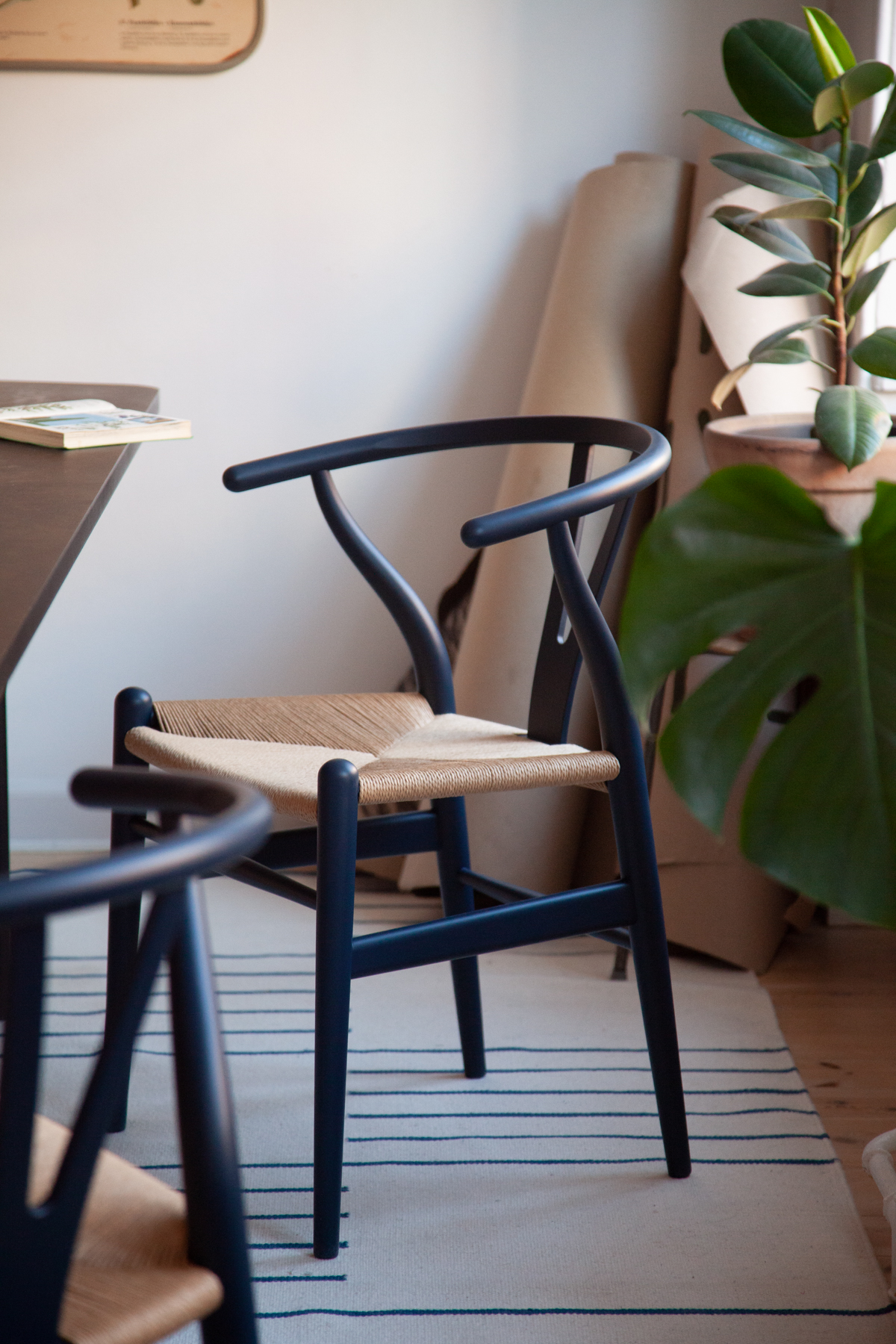 |
 |
The look of the Wishbone chair is as modern today as it was when it was first released. The blend of minimalism and organic design means that it transcends trends; it has become an icon, as beloved for its high comfort level as it is for its role in design history.
The curved shape of the back creates a beautiful line when aligned with a table, and the new blue color adds another design element to any room. A modern update isn’t necessary for a chair like the Wishbone, but it gives those who are looking for something a little different the perfect piece of design for their home.
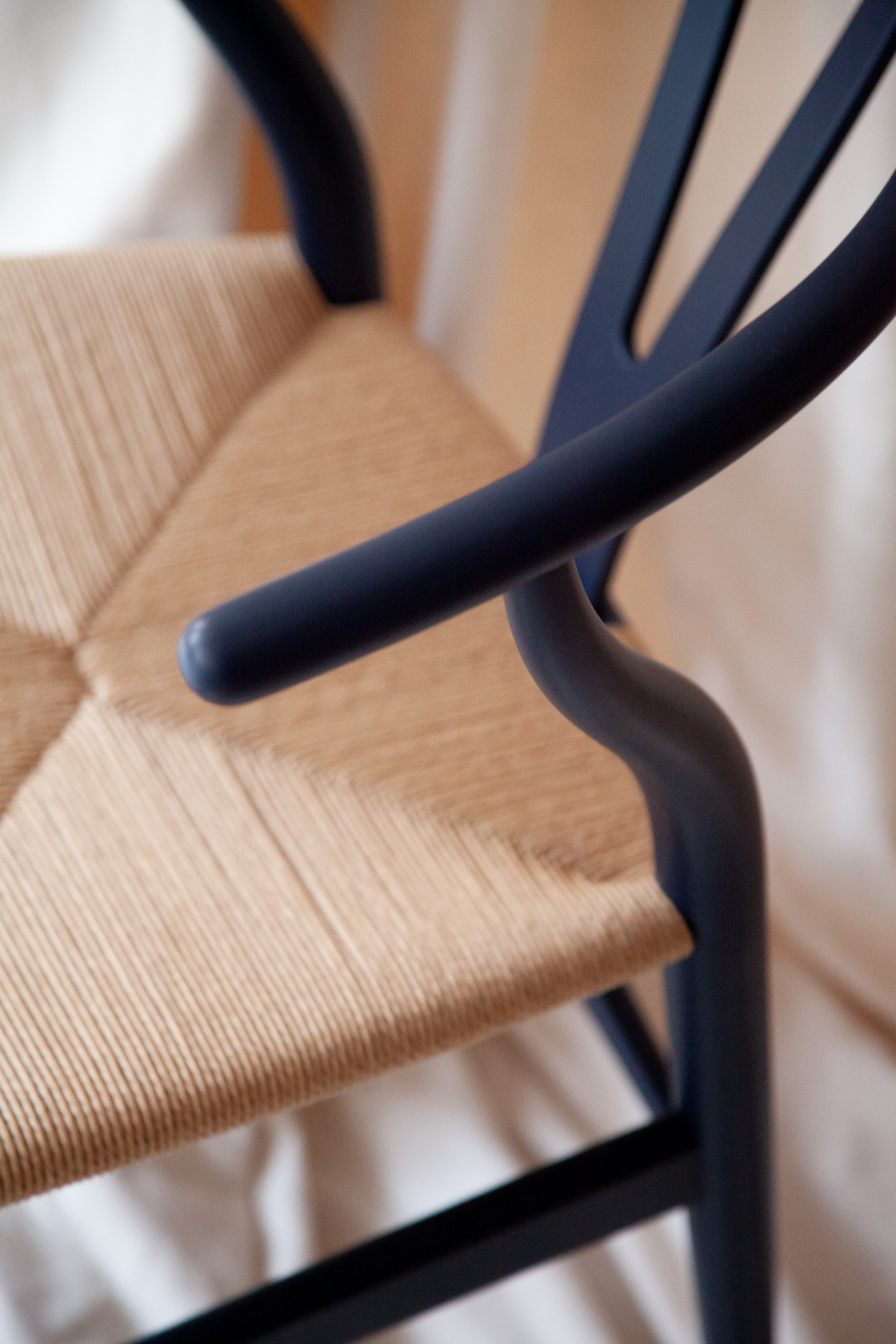 |
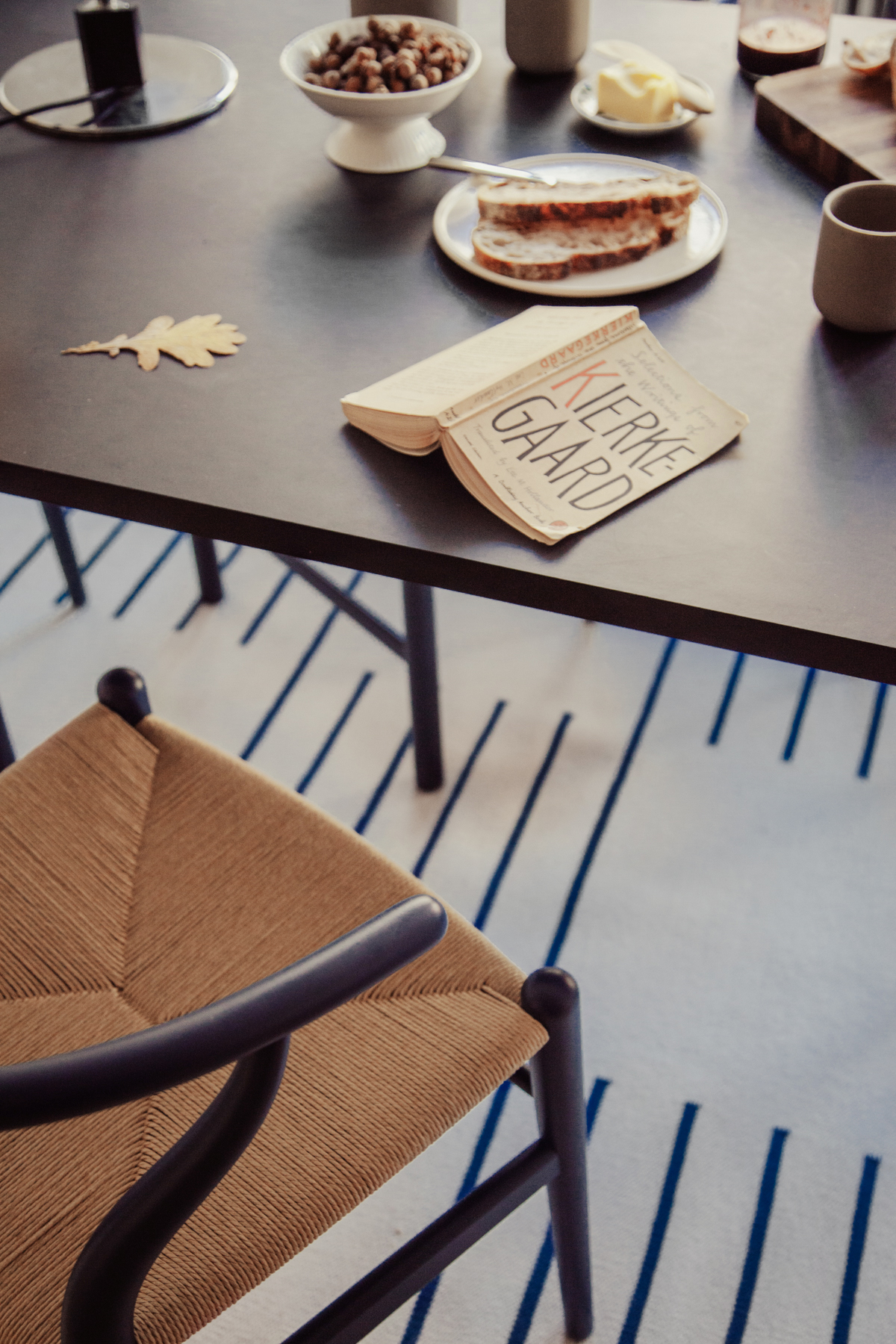 |
 |
 |
Buy the Wishbone Chair by Hans Wegner
Chair Specs
Seat Height: 45 cm (17.72 inches)
Height: 76 cm (29.92 inches)
Depth: 55 cm (21.65 inches)
Width: 51 cm (20.07 inches)
Material
Natural paper cord
Solid beech wood
Water-based paint
Find out more about Danish chairs, Scandinavian design, and Carl Hansen & Søn.

